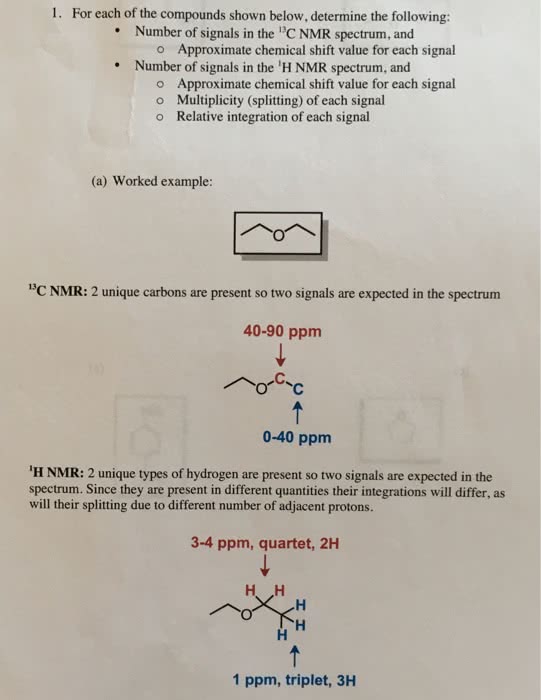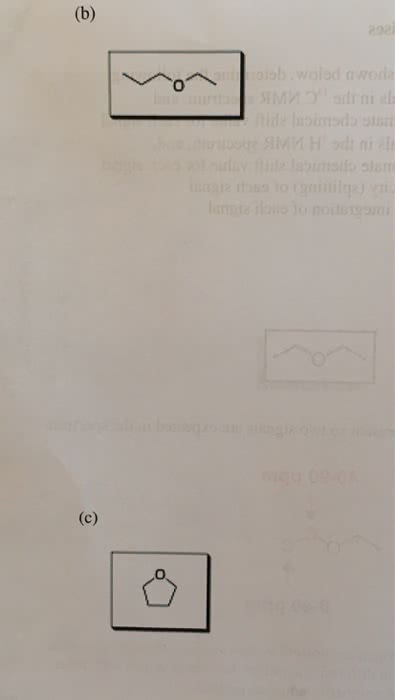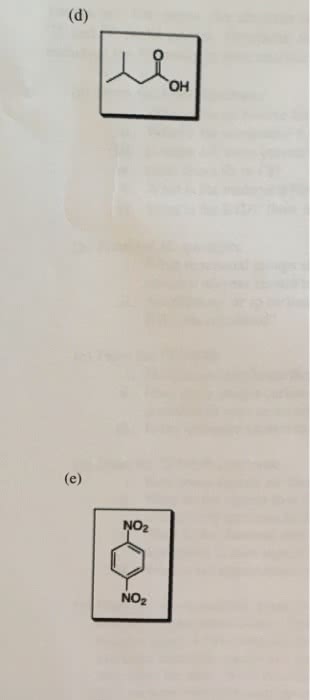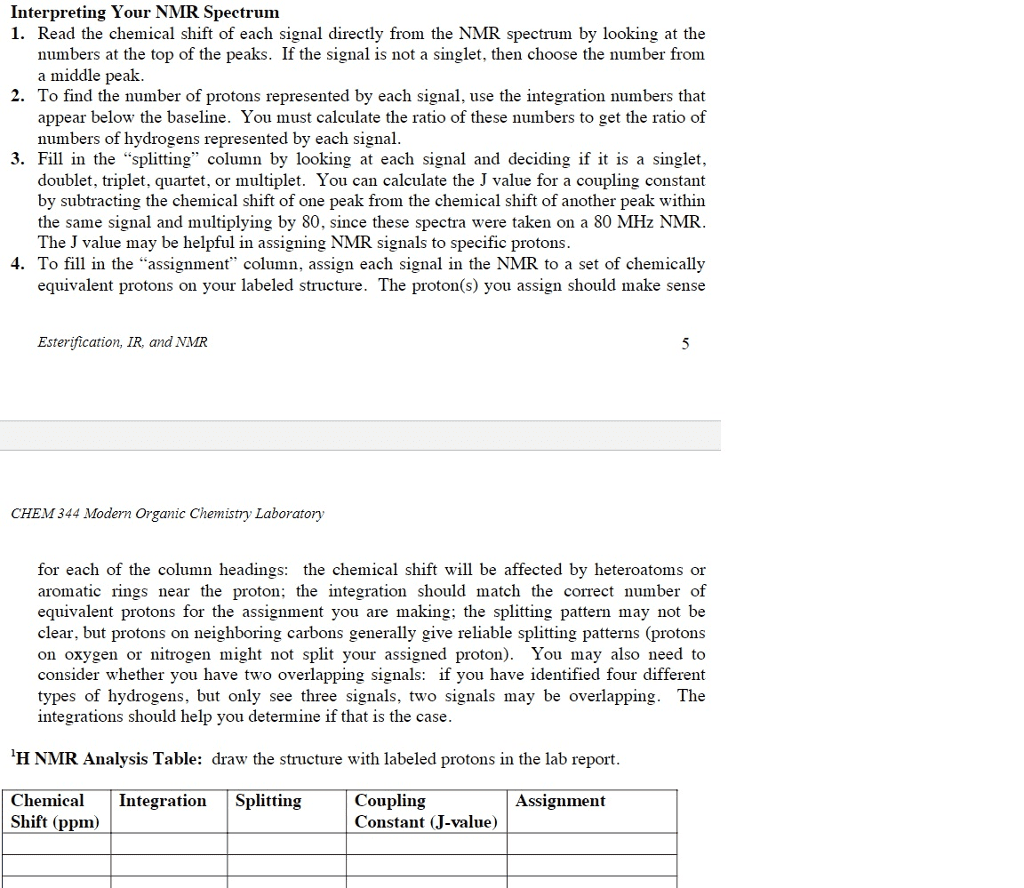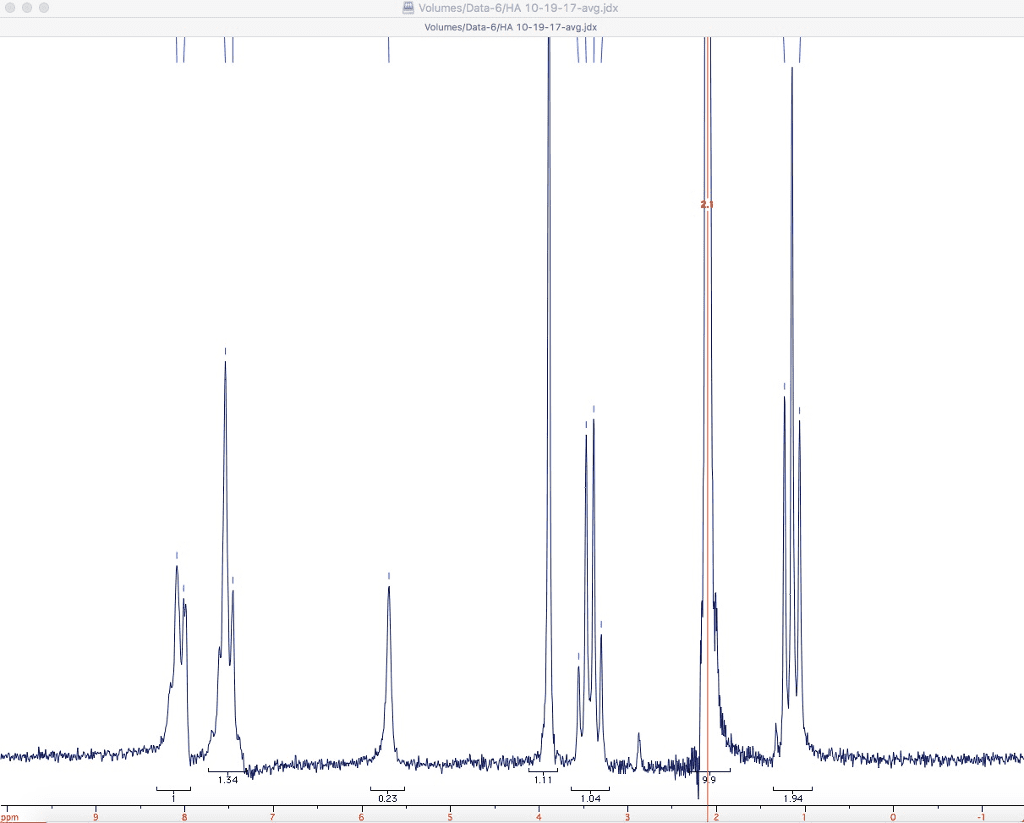01:160:307 Study Guide - Midterm Guide: Chemical Formula, Ethyl Acetate, Chemical Shift

BIAF 7e Test Bank 1
CHAPTER 13—NUCLEAR MAGNETIC RESONANCE SPECTROSCOPY
MULTIPLE CHOICE
1. Which feature in the 1H NMR spectrum provides information about the number of types of different
protons in a compound?
a.
number of signals
b.
integral
c.
splitting
d.
chemical shift
ANS: A
2. Which feature in the 1H NMR spectrum provides information about the relative number of each type of
proton in a compound?
a.
number of signals
b.
integral
c.
splitting
d.
chemical shift
ANS: B
3. Which feature in the 1H NMR spectrum provides information about the electronic environment of the
protons in a compound?
a.
number of signals
b.
integral
c.
splitting
d.
chemical shift
ANS: D
4. Which feature in the 1H NMR spectrum provides information about the number of neighboring protons
of each proton in the compound?
a.
number of signals
b.
integral
c.
multiplicity
d.
chemical shift
ANS: C
5. Which of the following is not true regarding 1H NMR spectroscopy?
a.
"shielding" leads to peaks at lower values of
b.
a "downfield" peak appears at a higher value of
c.
for a particular proton depends on the magnetic field strength of the instrument used.
d.
on a 300 MHz instrument, a proton that adsorbs irradiation at a frequency 1200 Hz higher
than the adsorption of TMS appears at 4 ppm.
ANS: C
find more resources at oneclass.com
find more resources at oneclass.com

BIAF 7e Test Bank 2
6. Which of the following is not true regarding 1H NMR spectroscopy?
a.
a "downfield" peak appears at a lower value of
b.
on a 300 MHz instrument, a proton that adsorbs irradiation at a frequency 900 Hz higher
than the adsorption of TMS appears at 3 ppm.
c.
for a particular proton is independent of the magnetic field strength of the instrument
used.
d.
"deshielding" leads to peaks at higher values of
ANS: A
7. How many sets of equivalent protons are there in hexane?
a.
2
b.
3
c.
6
d.
7
ANS: B
8. How many sets of equivalent protons are there in 2-methylhexane?
a.
2
b.
3
c.
6
d.
7
ANS: C
9. How many sets of equivalent protons are there in 3-methylhexane?
a.
2
b.
3
c.
6
d.
7
ANS: D
10. What is the splitting of the signal in the 1H NMR spectrum for the methyl protons of ethane?
a.
singlet
b.
doublet
c.
triplet
d.
quartet
ANS: A
11. What is the splitting of the signal in the 1H NMR spectrum for the methyl protons of propane?
a.
singlet
b.
doublet
c.
triplet
d.
quartet
ANS: C
find more resources at oneclass.com
find more resources at oneclass.com

BIAF 7e Test Bank 3
12. What is the splitting of the signal in the 1H NMR spectrum for the methyl protons of 1-bromo-2-
methylpropane?
a.
singlet
b.
doublet
c.
triplet
d.
nonet
ANS: B
13. Which of the following combinations of peaks appears in the 1H NMR spectrum of diethyl ether,
CH3CH2OCH2CH3?
a.
a triplet and a doublet
b.
a quartet and a sextet
c.
two singlets
d.
a triplet and a quartet
ANS: D
14. Which of the following combinations of peaks appears in the 1H NMR spectrum of butane?
a.
a triplet and a doublet
b.
a triplet and a quartet
c.
a triplet and a sextet
d.
two singlets
ANS: B
15. Which of the following combinations of peaks appears in the 1H NMR spectrum of 2,3-
dimethylbutane?
a.
two doublets
b.
a doublet and a septet
c.
a singlet and two doublets
d.
a doublet and an octet
ANS: B
16. Which of the following combinations of peaks appears in the 1H NMR spectrum of 1,2-
dimethyoxyethane, CH3OCH2CH2OCH3?
a.
two singlets
b.
a singlet and a triplet
c.
a singlet and two triplets
d.
a doublet and a triplet
ANS: A
17. Which of the following combinations of peaks appears in the 1H NMR spectrum of 1,4-
dimethyoxyethane, CH3OCH2CH2CH2CH2OCH3?
a.
three singlets
b.
a singlet, a triplet, and a quintet
c.
a singlet and two triplets
d.
a doublet and a triplet
ANS: C
find more resources at oneclass.com
find more resources at oneclass.com
Document Summary
Multiple choice: which feature in the 1h nmr spectrum provides information about the number of types of different protons in a compound, number of signals integral, splitting, chemical shift. Ans: a: which feature in the 1h nmr spectrum provides information about the relative number of each type of proton in a compound, number of signals integral, splitting, chemical shift. Ans: b: which feature in the 1h nmr spectrum provides information about the electronic environment of the protons in a compound, number of signals integral, splitting, chemical shift. Ans: d: which feature in the 1h nmr spectrum provides information about the number of neighboring protons integral of each proton in the compound, number of signals, multiplicity, chemical shift. Ans: a: how many sets of equivalent protons are there in hexane, 2, 3, 6, 7. Ans: b: how many sets of equivalent protons are there in 2-methylhexane, 2, 3, 6, 7.


